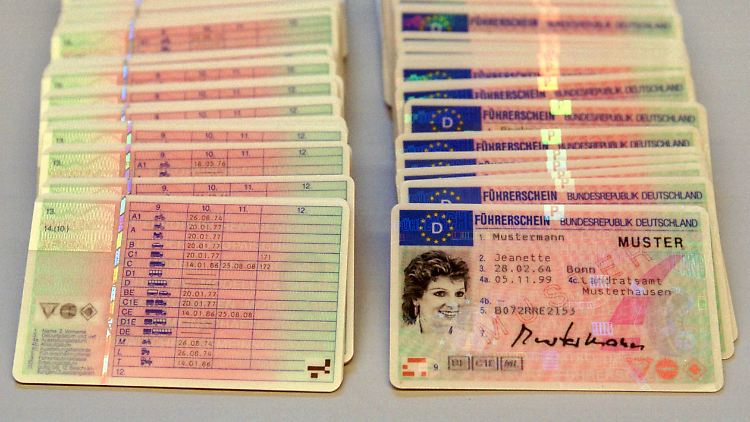Understanding Road Traffic Regulations: A Comprehensive Guide
Roadway traffic regulations are necessary for making sure the safety of drivers, pedestrians, and other road users. These laws govern the operation of lorries, the habits of motorists and pedestrians, and assist in smooth traffic circulation. This article explores the different elements of road traffic guidelines, their importance, deutscher führerschein kaufen seriös führerschein kaufen deutschland (https://paildew1.bravejournal.net/15-Weird-hobbies-that-will-make-you-better-at-buy-a-german-driving-license) and some typical rules and guidelines that every roadway user ought to recognize with.
The Importance of Road Traffic Regulations
Roadway traffic regulations serve several vital functions:
- Safety: They are mostly developed to protect the lives of individuals on the roadway, reducing accidents and injuries.
- Orderly Traffic Flow: By developing clear guidelines, these policies assist in handling the flow of automobiles and echten Führerschein kaufen erfahrungen decreasing blockage.
- Security of Pedestrian Rights: They guarantee that pedestrian crossings and rights-of-way are respected, promoting more secure travel on foot.
- Ecological Considerations: Certain policies aim to minimize ecological impact, motivating environmentally friendly driving practices.
- Legal Framework: They provide legal accountability for motorists and pedestrians, defining penalties for offenses.
Secret Elements of Road Traffic Regulations
Understanding roadway traffic guidelines is crucial for compliance and safety. Below are a few of the crucial elements:
| Element | Description |
|---|
| Traffic Signs | Numerous indications that provide info and guidelines to motorists. |
| Traffic Signals | Lights that regulate the circulation of traffic at crossways. |
| Speed Limits | Optimum and minimum speed limits set for various road types. |
| Access Rules | Guidelines on which roadway users should go initially at crossways. |
| Seat Belt Regulations | Laws mandating the using of safety belt for chauffeur and travelers. |
| Driving Under the Influence | Rigorous charges for running a vehicle while impaired by alcohol or drugs. |
| Lorry Registration and Licensing | Requirements for lorries to be registered and motorists to have valid licenses. |
Typical Traffic Regulations
Although traffic guidelines can vary from one country to another, some typical guidelines are generally observed worldwide:
1. Speed Limits
The majority of jurisdictions enforce speed limitations based on road type and area, such as:
- Residential locations: 25-35 mph
- Urban areas: 30-50 miles per hour
- Highways and freeways: 55-70 mph
2. Drinking and Driving
Driving under the influence of alcohol or drugs is prohibited in most locations. Typical blood alcohol concentration (BAC) limitations are:
- 0.08% for basic chauffeurs
- 0.00% for amateur or business drivers
3. Safety Belt Usage
Safety belt must be worn by all residents in a lorry. Failure to comply can cause fines.
4. Pedestrian Crossings
Drivers must accept pedestrians at significant crosswalks and follow signals directing pedestrian motion.
5. Cellphone Use
Using handheld devices while driving is forbidden in lots of areas to decrease distractions.
Frequently asked question Section
Q1: What should I do if I witness a traffic offense?
If you observe a traffic violation, you need to collect as much information as possible (car description, license plate number, place, and time) and report it to local police.
Q2: How can I stay updated on changes in traffic policies?
Traffic laws can alter regularly. Updates are typically published by city government websites. It is suggested to follow local news or traffic police' announcements for any changes.
Q3: Are there specific traffic guidelines for commercial motorists?
Yes, commercial chauffeurs typically deal with stricter regulations, such as driving hour restrictions, vehicle evaluations, and special licensing requirements.
Q4: What occurs if I break traffic regulations?
Charges for breaking traffic laws can include fines, points on your license, and in severe cases, jail time. Repetitive violations might lead to the suspension of driving advantages.
Q5: How do traffic regulations affect public transport?
Traffic regulations are essential for public transportation systems to work effectively. They assist in establishing bus lanes, controling taxi services, and ensuring that public transportation vehicles follow safety standards.
Roadway traffic guidelines play an essential role in keeping the safety and order of highways globally. Comprehending these laws is not simply a legal responsibility but an ethical one that promotes the wellness of all road users. Continuously updating oneself about traffic regulations and sticking to them can greatly decrease the risks associated with road travel. As neighborhoods develop and innovations enhance, these policies might likewise adapt, necessitating constant learning for drivers, bicyclists, and pedestrians alike.
By keeping notified and remaining compliant with roadway traffic guidelines, individuals contribute positively to the shared duty of road security, ultimately reducing mishaps and conserving lives.
